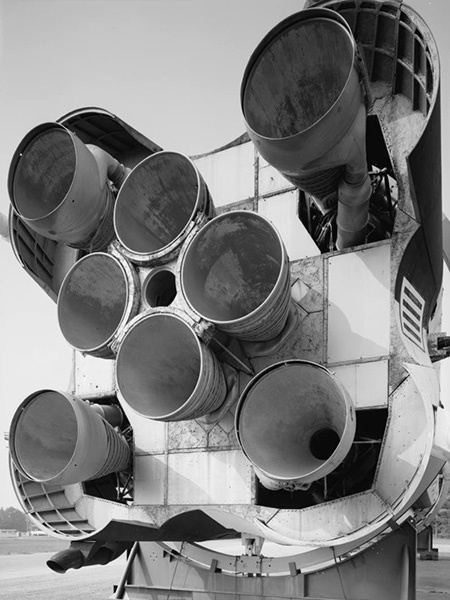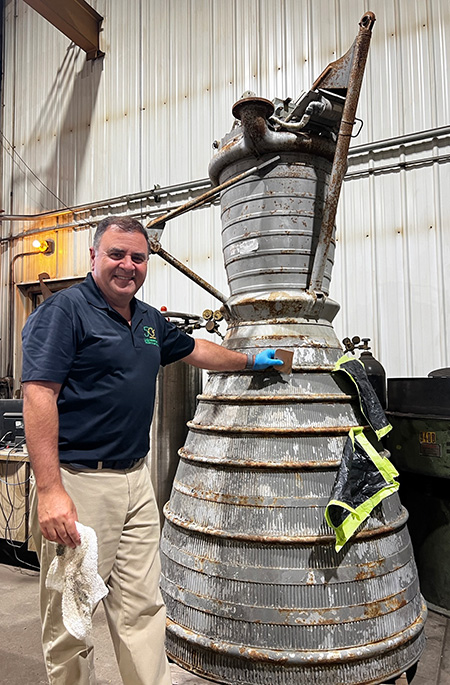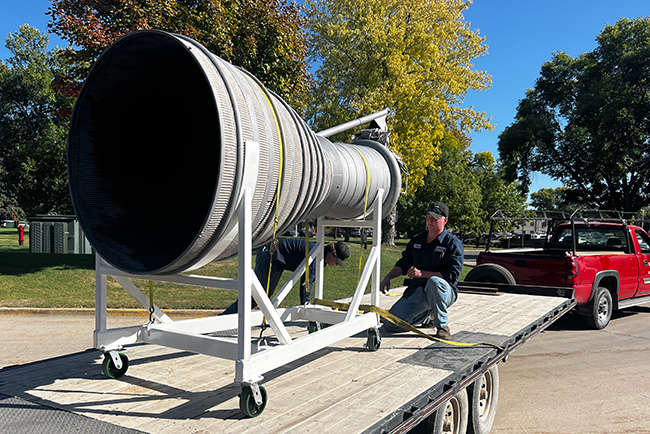How Did This Rocket Engine Make It To UND?
In 2022, Charles Dischinger, a human factors expert at NASA's Marshall Space Center, contacted his colleague, Dr. Pablo de León, Chair of Space Studies at UND. Both had attended the International Space University in the 1990s. Dischinger informed Dr. de León that a full Saturn IB rocket would soon be made available by NASA to educational institutions. However, interested institutions would need to arrange transportation of the 68-foot rocket from Alabama and cover the costs of refurbishment and display, with initial estimates around $3 million.
When NASA began dismantling the Saturn IB, which had been on display at a visitor center in Alabama, it became evident that the rocket's structure was beyond salvage. NASA decided to recover only the engines and scrap the rest of the rocket.


The eight H-1 engines were offered through NASA's artifact program. Although UND initially submitted a request for one of the engines, it was denied, and the engines were allocated to other universities across the country.
However, luck was on UND's side when one of the selected universities failed to secure the necessary resources in time. NASA, which had been receiving weekly requests from UND, granted permission to transfer one of the engines to North Dakota.
The Dean of the School of Aerospace, Dr. Robert Kraus, gave the go-ahead and helped secure the funds to transport and prepare the engine. While NASA valued the transferred rocket engine at $1 million, UND invested only a few thousand dollars in its transportation and refurbishment, preserving this remarkable piece of U.S. space program history.
Transporting the heavy, valuable engine required careful logistics. The H-1 engine, exposed to the elements for nearly 50 years, needed extensive cleaning and refurbishment. Early attempts to clean it manually proved impossible, prompting UND to seek local support.
Grand Forks Welding played a critical role, coordinating transportation and designing a custom stand for the engine's display. X Sandblasting provided precise cleaning, using specialized pellets to avoid damaging the engine's delicate cooling channels.

The engine arrived in the summer of 2024, and by November, it was ready for display. In addition to serving as a historical artifact, the engine will be used as a teaching tool for UND's propulsion courses.


Saturn IB Rocket Display image courtesy of trolvag, CC BY-SA 3.0, via Wikimedia Commons.